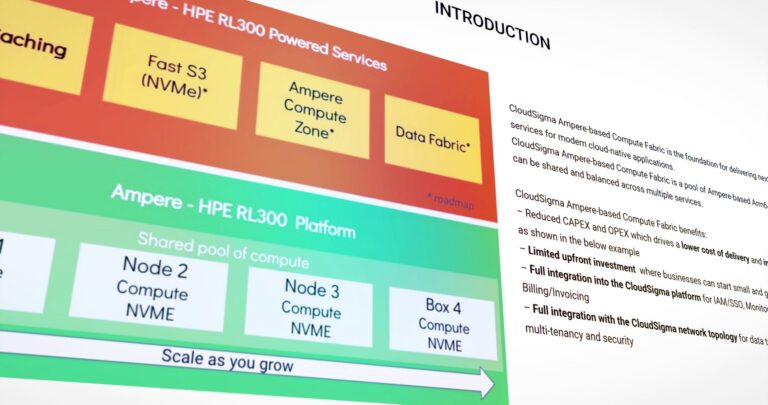Manufacturers face growing pressure to quickly produce increasingly complex and higher-quality products to meet customer demand.
While AI appears to be a logical solution, the reality is that up to 80% of AI projects either never reach completion or don’t meet their objectives, resulting in failure or cancellation.
Gone are the days of experimenting with AI. Manufacturing companies are now seeking to integrate AI tools permanently into operations. A recent survey revealed that 88% of UK manufacturers have already invested in AI and machine learning, compared to 84% of their European counterparts, or plan to do so within the next 12 months.
UK manufacturers are primarily using these technologies in four key areas: quality control (38%), cybersecurity (37%), logistics (34%), and customer service (32%).
The hype is everywhere, but what is the reality on the factory floor? Proven adoption frameworks and journeys are scarce, creating uncertainty for new adopters. This is where a product development roadmap can help manufacturers seamlessly integrate AI at every level of their operations.
- Don’t get stuck in pilot purgatory
A recent Gartner AI survey revealed that only 54% of projects progress from the pilot phase to production. So, what’s behind this? Manufacturers often identify use cases for AI and conduct proof of concept or pilot projects, but these efforts frequently stall – a phenomenon known as pilot purgatory.
Gartner’s hype cycle for AI shows we are currently at the peak of inflated expectations. AI projects fail because they often overlook the anticipated value and the true implications of implementing the technology within the organisation. So, how can manufacturers avoid falling into the AI void?
The value of an AI roadmap
AI adoption success lies in a product development roadmap that helps organisations scale effectively. The key is to aim for early wins by identifying business areas already primed for AI success and where significant impact is possible.
Consider this scenario: a manufacturer aims to increase its profit margins by 10% next year. Achieving this goal depends on meeting three objectives: reducing machine downtime, minimising wastage, and addressing supplier irregularities.
From this assessment, the manufacturer can pinpoint opportunities to use AI analytics to predict machine failures, detect product quality issues, and optimise supplier routes. The focus is on understanding which processes can be transformed to successfully adopt AI and create new value, which will benefit both the bottom line and the workforce.
- Avoiding analysis paralysis – too much data, not enough insights
One of the biggest challenges in AI adoption for manufacturers is data management. Organisations often collect data from multiple disparate sources, including Excel spreadsheets, manual entries, on-premise servers, and cloud-based systems. Manufacturers that attempt to integrate all this data to gain a comprehensive view of the business and train AI models are left with the significant hurdle of analysis paralysis.
To overcome this challenge, manufacturers need a robust data strategy that ensures seamless data integration and accessibility. This requires manufacturers to standardise data formats, implement centralised data storage solutions, and employ advanced data processing techniques. A unified data ecosystem allows organisations to improve data quality, streamline workflows, and enhance the accuracy of AI models.
Take control back with effective data governance
When it comes to AI use case scenarios, manufacturers have limited reference examples, so they must assess the data they have available and determine what additional data might be needed to train the AI tools. Organisations are inundated with data, but quality matters as much as quantity. To ensure data quality, manufacturers need to implement robust processes and policies for managing data correctly, ensuring its usability, consistency, and integrity.
This is where the outputs of machine learning models and associated decision-making data in end-to-end solutions can make a significant difference. These outputs can be integrated into dashboards tailored for everyday business use, seamlessly fitting into user workflows to provide actionable insights. Manufacturers can then use these insights to optimise operations, improve decision-making, and drive better business outcomes.
- Overcoming employee resistance – no one likes change, particularly from a ‘machine’
One of the initial hurdles manufacturers face with AI adoption is employee resistance. When businesses introduce changes, especially technological ones, the immediate concern for many employees is, “Will this take my job?” However, manufacturers aim to harness AI not to replace roles but to make staff more efficient, reduce repetitive tasks, and enhance overall productivity. So, what can be done to increase acceptance?
Cutting through the clutter, measuring success the right way
It’s time for leadership to step up and demonstrate how AI implementation will benefit everyone. The focus should be on how employees can use the technology to enhance job functions, improve working conditions, and create new opportunities for career growth rather than being replaced by it. Leadership teams need to align AI initiatives with business objectives, working backward from desired outcomes to identify applications that drive these goals. This product-based approach helps organisations understand what their people need from AI and how it will integrate into larger operational frameworks.
At this stage it is vital to involve employees in the AI implementation process to boost acceptance. Manufacturing companies can seek employee input and demonstrate how AI can address their concerns and make their tasks easier and more efficient to create a sense of ownership. Manufacturers can encourage cross-functional teams to work together and share insights in order to ensure a smoother AI integration process and alignment with organisational goals.
To ensure success beyond the initial pilot phase, leadership teams must evaluate AI products using more than just standard performance metrics. User adoption rates can provide valuable insights. By examining the proportion of the target audience actively using the product, the repeat usage rate, and how well AI helps employees resolve initial issues, manufacturers can assess whether both employees and the company are realising the long-term value.
- AI – the unsung hero in combatting the emerging data skills gap
A third (33%) of UK manufacturers report that a lack of skills is the most significant barrier to implementing smart manufacturing technologies like AI. This highlights a substantial gap between the demand for these technologies and the ability to implement them effectively. So, how can manufacturers address this skills divide?
Mastering the essentials of data training – reskilling offers a solution
One approach is to invest in training programs to upskill current employees. IBM research found that reskilling and workforce development (39%) are among the top AI investments for organisations exploring or deploying AI. Many manufacturing organisations often don’t realise they already have employees with the technical or transferable skills needed for AI roles. For instance, a logistics coordinator could pivot to being a data engineer or data analyst because they already understand the data, processes, ERP systems, and CRMs.
What’s often missing is a bit of targeted learning and support in areas such as data engineering, data lakehouses, data warehousing, or coding. With this additional training, manufacturers can transform their employees into data engineers and effectively use AI to augment and enhance their work.
Additionally, manufacturers can look to hire new talent with expertise in AI and smart manufacturing. A team built with a mix of experienced employees and new hires with fresh, specialised knowledge can create a dynamic workforce capable of driving technological innovation.
Organisations that are able to tap into the existing skills within their workforce and provide the necessary training to new hires, can more smoothly integrate AI technologies, improve operational efficiency, and ultimately enhance their competitiveness.
AI project success is no guarantee without a roadmap
AI is accessible and achievable for all levels of manufacturing operations. A well-defined AI roadmap allows manufacturers to pinpoint where AI can provide the most value, streamline processes, and enhance productivity. Manufacturers that are able to break down the implementation into manageable phases will be able to focus on early successes and counter the daunting statistics of AI project failures.
About the Author
Nicholas Lea-Trengrouse is Head of Business Intelligence at Columbus. Columbus is a global IT services and consulting company with more than 1,600 employees serving our customers worldwide. We bring digital transformation into your business, help maximize your value chain and position you to thrive far into the future. Columbus’ offers end-to-end digital solutions within Strategy & Change, Cloud ERP, Digital Commerce, Data & AI, Customer Experience and Application Management that address the lifecycle and sustainability demands of the Manufacturing, Retail & Distribution, Food & Process industries.


